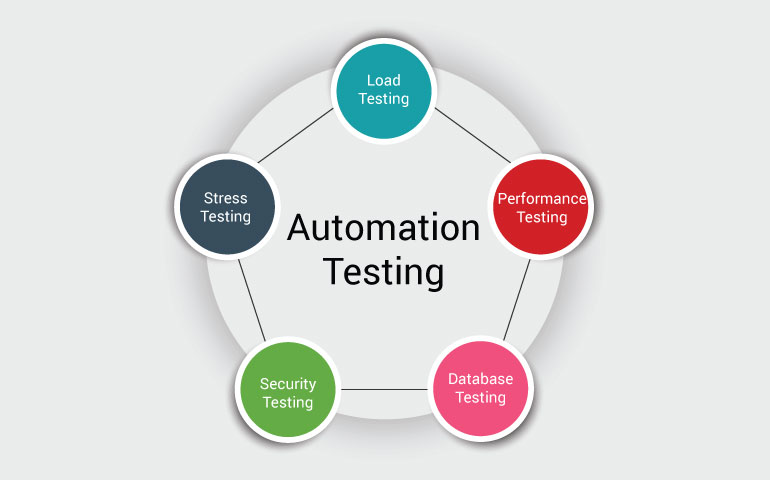Effective Automation Testing: Enhancing Software Program Dependability and Rate
Effective Automation Testing: Enhancing Software Program Dependability and Rate
Blog Article
From Handbook to Automated Screening: A Comprehensive Guide to Transitioning Efficiently and Effectively
In the world of software program screening, the change from guidebook to automated procedures has come to be an increasingly essential change for companies looking for to boost performance and accuracy in their testing techniques. As modern technology continues to advancement, the need for reliable and smooth computerized screening methods has never been much more important. The trip from manual to automated screening is not without its difficulties, yet when come close to purposefully and with a clear plan in mind, the advantages can be considerable - automation testing. In this detailed guide, we will certainly explore crucial steps and considerations necessary for a successful shift, from the first selection of devices to the assimilation of automation right into existing process. Remain tuned to reveal the understandings that will help lead the method for a smoother and more reliable testing procedure.
Advantages of Automated Testing
Automated screening offers numerous advantages, improving effectiveness and precision in software application development processes. Automated examinations can be run all at once on several tools and operating systems, drastically speeding up the testing phase contrasted to hands-on testing.
In addition, automated testing makes certain a greater level of accuracy in discovering problems. Considering that automated examinations follow predefined manuscripts, human mistake is reduced, causing more trusted test results. Consistency in screening is also improved, as automated tests implement the very same actions exactly each time they are run. This consistency is vital in ensuring that all functionalities of the software are completely tested, minimizing the likelihood of undetected pests slipping via to production.
Selecting the Right Tools

First of all, analyze your requirements and goals. Understand the scope of your project, the modern technologies involved, and the ability of your team. This evaluation will certainly help you establish the features and capabilities you call for in your screening tools.
Second of all, take into consideration the compatibility of the tools with your existing processes and systems. Smooth combination with your existing software application development lifecycle is necessary to guarantee a smooth change to automation.
Furthermore, evaluate the scalability and versatility of the tools. As your testing requires advance, the tools ought to be able to adapt and accommodate changes efficiently.
Last but not least, consider the support and area around the tools. Durable assistance and an active user community can offer important sources and assistance when executing automated screening. By meticulously taking into consideration these facets, you can choose the right tools that line up with your requirements and established the phase for a successful transition to automated screening.
Creating Reliable Examination Scripts

When crafting examination scripts, it is necessary to think about the particular needs of the software being tested and guarantee that the scripts attend to all essential functionalities. Clear and descriptive naming conventions for test manuscripts and test situations can improve readability and maintainability. Furthermore, integrating error handling devices within the examination scripts can aid in determining and addressing concerns quickly.
Furthermore, organizing test manuscripts into modular parts can boost reusability and scalability, minimizing redundancy and improving effectiveness in test manuscript upkeep. Routine evaluations and updates to test manuscripts are critical to equal progressing software needs and capabilities. By adhering to these principles, testers can create efficient and durable examination manuscripts that add significantly to the success of automated screening processes.
Integrating Automation Into Workflows
Reliable assimilation of automation tools right into existing process improves and simplifies procedures productivity within software development cycles. When incorporating automation right into workflows, it is important to identify recurring jobs that can be automated to conserve time and reduce human mistake. By seamlessly incorporating automated testing devices like Selenium or Appium right into the software program advancement lifecycle, teams can accomplish faster responses on code modifications, causing quicker pest discovery and resolution. This integration allows for continuous testing throughout the development process, making certain that any type of concerns are determined early, resulting in greater software application quality. Furthermore, automation can be used to discover this info here set off tests instantly after each code dedicate, supplying immediate validation and liberating testers to concentrate click here now on even more complicated circumstances. Appropriate assimilation of automation tools needs cooperation in between advancement, screening, and operations groups to develop a unified operations that enhances performance and performance in delivering top quality software application products.
Making Sure a Smooth Transition
Efficiently transitioning to automated testing includes careful preparation and mindful implementation to reduce interruptions and make the most of effectiveness in the software application advancement procedure - automation testing. To make certain a smooth change, it is necessary to begin by performing a complete evaluation of the present screening processes and recognizing areas where automation can bring the most substantial advantages. Engaging with all stakeholders at an early stage at the same time, including designers, testers, and project supervisors, is critical for gathering support and buy-in for the automation effort
Interaction is crucial throughout this shift phase. Clear communication of the goals, advantages, and assumptions of automated testing aids to manage any type of resistance or worries that might arise. Furthermore, giving ample training and resources for team members to upskill in automation tools and strategies is vital for making certain a successful transition.

Final Thought
Finally, transitioning from handbook to automated testing provides countless advantages, including increased efficiency and reliability. By selecting the appropriate tools, writing reliable examination scripts, and incorporating automation perfectly right into operations, organizations can make certain a successful and smooth shift. It is vital to accept automation as an important asset in software program testing procedures to enhance total quality and performance.
In the world of software program testing, the shift from handbook to automated procedures has ended up being a progressively crucial change for companies seeking to improve performance and accuracy in their testing techniques. Automated tests can be run concurrently on multiple tools and operating systems, substantially speeding up the screening phase compared to hands-on screening. Consistency in screening is also boosted, as automated tests carry out the same steps exactly each time they are run.To make certain the effective execution of chosen screening tools, the development of effective examination scripts plays an essential duty in verifying the capability and performance of automated procedures - automation testing. By complying with these principles, testers can produce durable and reliable examination manuscripts that add dramatically to the success of automated testing procedures
Report this page